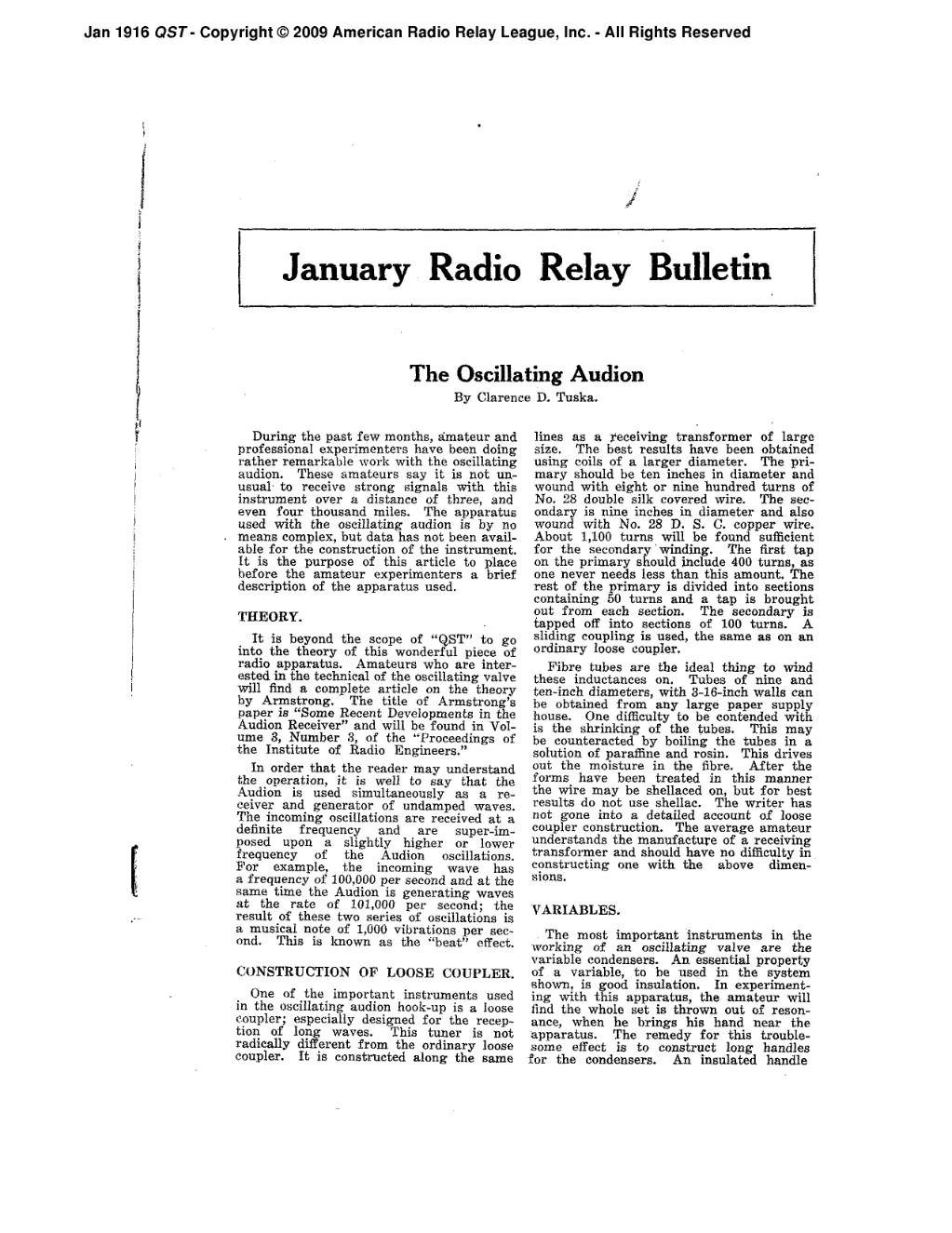January Radio Relay Bulletin
The Oscillating Audion
By Clarence D. Tuska
|
During the past few months, amateur and professional experimenters have been doing rather remarkable work with the oscillating audion. These amateurs say it is not unusual to receive strong signals with this instrument over a distance of three, and even four thousand miles. The apparatus used with the oscillating audion is by no means complex, but data has not been available for the construction of the instrument. It is the purpose of this article to place before the amateur experimenters a brief description of the apparatus used. THEORY. It is beyond the scope of “QST” to go into the theory of this wonderful piece of radio apparatus. Amateurs who are interested in the technical of the oscillating valve will find a complete article on the theory by Armstrong. The title of Armstrong's paper is “Some Recent Developments in the Audion Receiver” and will be found in Volume 3, Number 3, of the "Proceedings of the Institute of Radio Engineers.” In order that the reader may understand the operation, it is well to say that the Audion is used simultaneously as a receiver and generator of undamped waves. The incoming oscillations are received at a definite frequency and are super-imposed upon a slightly higher or lower frequency of the Audion oscillations. For example, the incoming wave has a frequency of 100,000 per second and at the same time the Audion is generating waves at the rate of 101,000 per second the result of these two series of oscillations is a musical note of 1,000 vibrations per second. This is known as the “beat” effect. CONSTRUCTION OF LOOSE COUPLER One of the important instruments used in the oscillating audion hook-up is a loose coupler; especially designed for the reception of long waves. This tuner is not radically different from the ordinary loose coupler. It is constructed along the same |
lines as a receiving transformer of large size. The best results have been obtained using coils of a larger diameter. The primary should be ten inches in diameter and wound with eight or nine hundred turns of No. 28 double silk covered wire. The secondary is nine inches in diameter and also wound with No. 28 D. S. G. copper wire. About 1,100 turns will be found sufficient for the secondary winding. The first tap on the primary should include 400 turns, as one never needs less than this amount. The rest of the primary is divided into sections containing 50 turns and a tap is brought out from each section. The secondary is tapped off into sections of 100 turns. A sliding coupling is used, the same as on an ordinary loose coupler.
Fibre tubes are the ideal thing to wind these inductances on. Tubes of nine and ten-inch diameters, with 3-16-inch walls can be obtained from any large paper supply house. One difficulty to be contended with is the shrinking of the tubes. This may be counteracted by boiling the tubes in a solution of paraffine and rosin. This drives out the moisture in the fibre. After the forms have been treated in this manner the wire may be shellaced on, but for best results do not use shellac. The writer has not gone into a detailed account of loose coupler construction. The average amateur understands the manufacture of a receiving transformer and should have no difficulty in constructing one with the above dimensions. VARIABLES The most important instruments in the working of an oscillating valve are the variable condensers. An essential property of a variable, to be used in the system shown, is good insulation. In experimenting with this apparatus, the amateur will find the whole set is thrown out of resonance, when he brings his hand near the apparatus. The remedy for this troublesome effect is to construct long handles for the condensers. An insulated handle |
